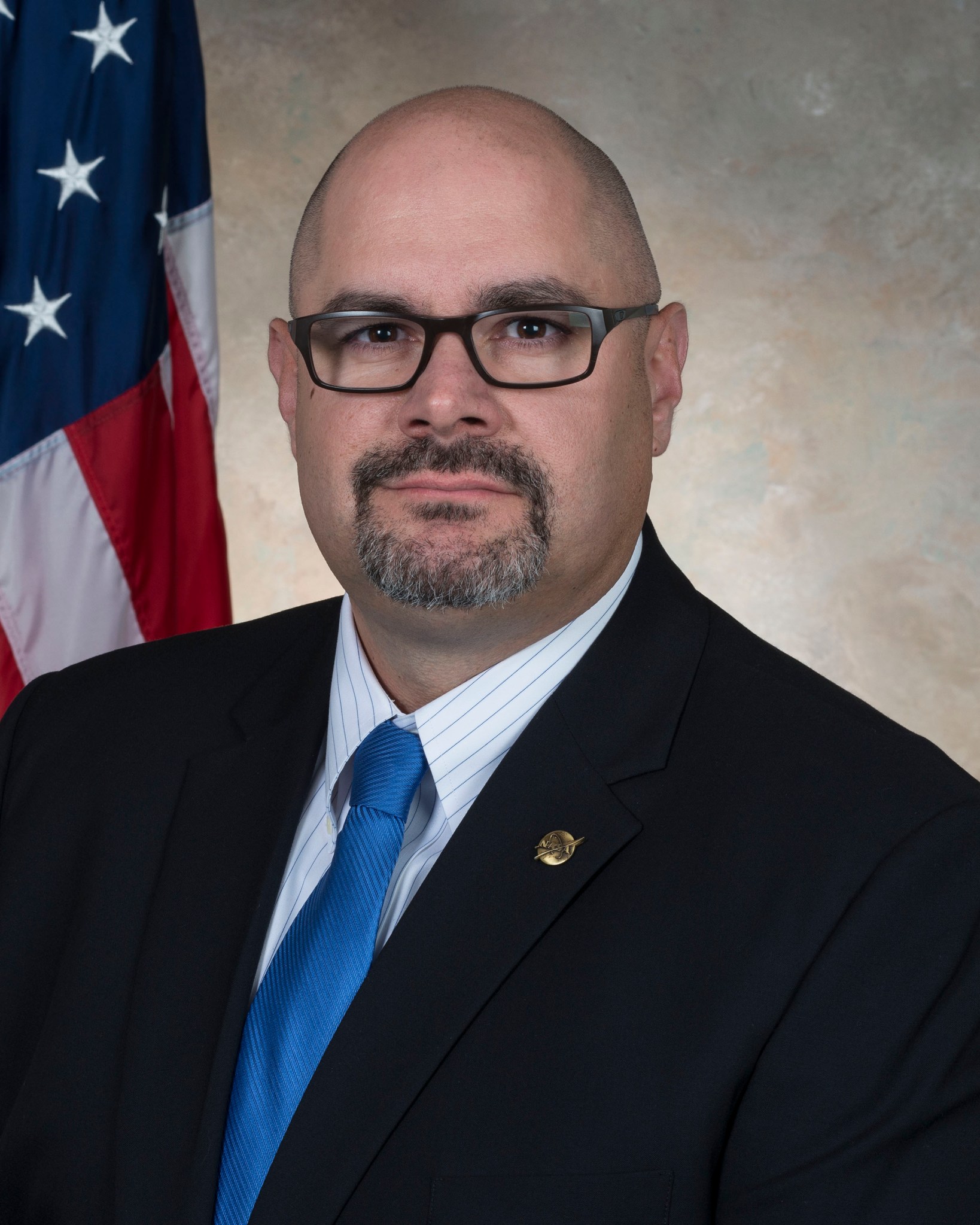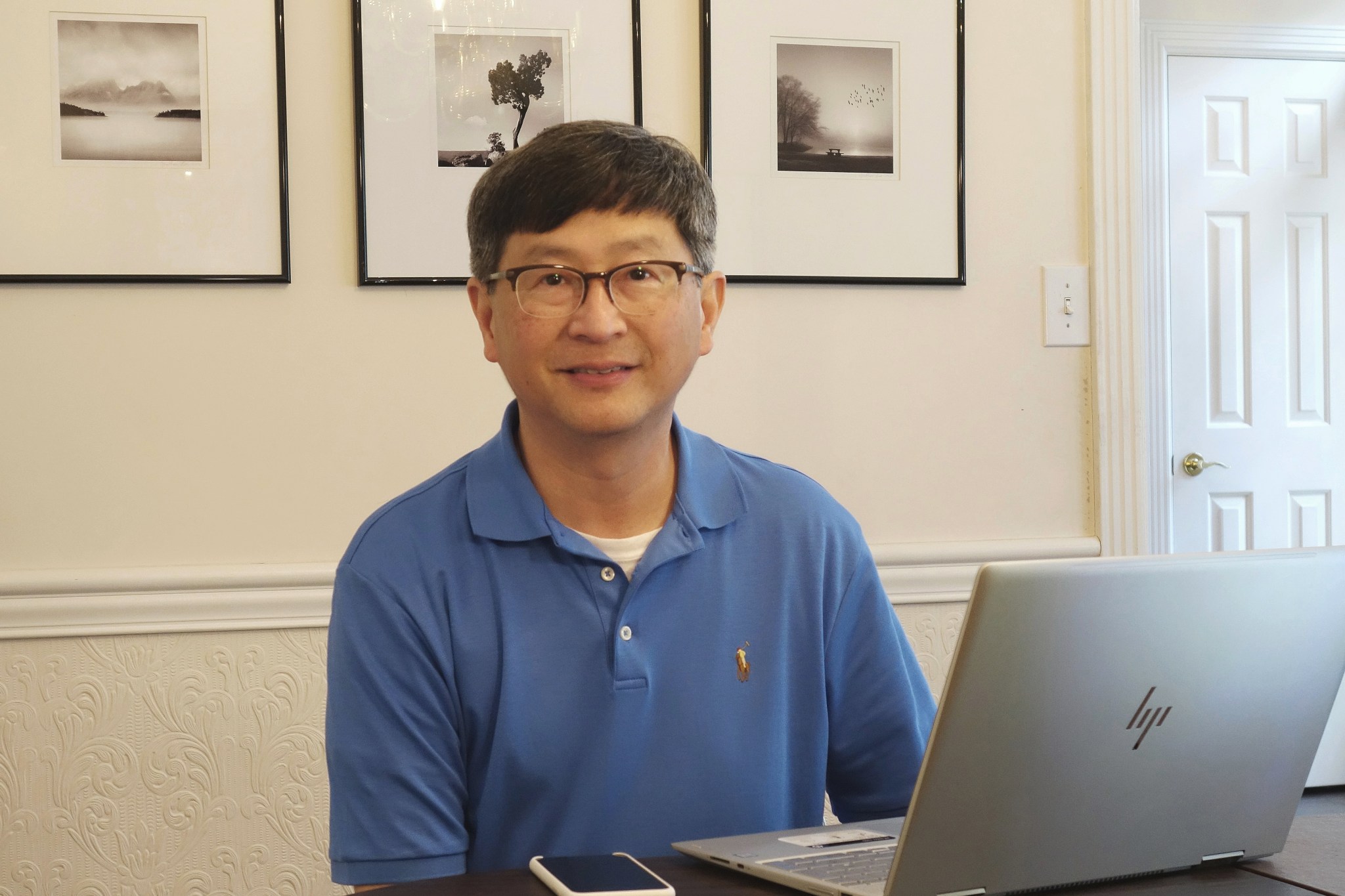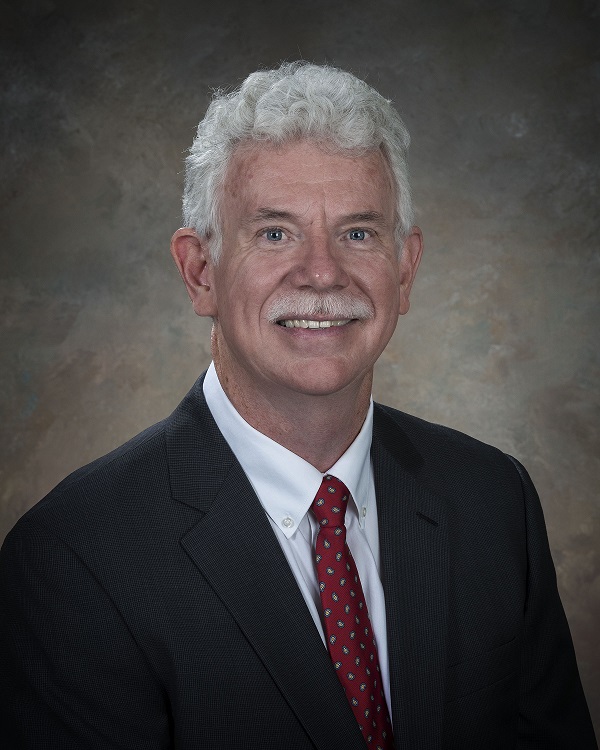In This Week’s Star
- Joseph Pelfrey Named Manager of Human Exploration Development & Operations Office
- Loss of Father Leads Successful Inventor Jonathan Lee to Join Fight Against COVID-19
- Paul Crawford Plays Vital Role in Crew-1 Mission, Continues Family Tradition in Aiding Historic Space Programs
- Look After Yourselves and Others: A Message From Employee Assistance Program Coordinator Terry Sterry
- Chandra Helps Researchers Assess Habitability of Planets Orbiting Elder Red Dwarf Stars
- NASA’s Lucy Spacecraft Receives First Instrument, Highlighted on ‘This Week @NASA’
- This Week in NASA History: HEAO-2 Launches – Nov. 13, 1978
Joseph Pelfrey Named Manager of Human Exploration Development & Operations Office
Joseph Pelfrey has been named manager of the Human Exploration Development & Operations Office at NASA’s Marshall Space Flight Center.
Pelfrey, who had been deputy manager of the office since fall 2018, succeeds Bobby Watkins, who retired from NASA service Oct. 30. Pelfrey is responsible for managing and implementing Marshall’s work portfolio in the areas of human exploration and transportation projects; habitation systems, payload and mission operations and integration; and project development and integration for International Space Station payloads, facilities, and environmental control and life support systems.
Pelfrey, who was previously a Teledyne Brown contractor supporting development of space station payload hardware, joined NASA as a civil servant in 2004. He initially was an aerospace engineer in the Science and Mission Systems Office, and held multiple leadership roles within the space station program, leading the development, integration, and operations of multiple payload facilities and science experiments.
In 2008, he moved to Marshall’s Engineering Directorate to become the design integration lead for the Ares I Upper Stage, a rocket development program that would inform development of NASA’s Space Launch System. In 2011, he was named engineering task manager for the SLS Spacecraft/Payload Integration and Evolution Office, and subsequently managed Marshall’s Commercial Orbital Transportation Services Program.
Pelfrey was named deputy manager in 2012, and manager in 2015, of the Exploration and Space Transportation Development Office, part of Marshall’s Flight Programs and Partnerships Office. Appointed in 2016 to the Senior Executive Service – the personnel system covering most top managerial, supervisory, and policy positions in the executive branch of the federal government – Pelfrey spent two years as associate director for operations of Marshall’s Engineering Directorate, overseeing budget, workforce planning, and infrastructure.
A native of Cheraw, South Carolina, Pelfrey received a bachelor’s degree in aerospace engineering in 2000 from Auburn University in Alabama. He and his wife, Nicole, and their daughter live in Huntsville.
Loss of Father Leads Successful Inventor Jonathan Lee to Join Fight Against COVID-19
By Daniel Boyette
Jonathan Lee’s work with cutting-edge alloys has made him one of the most successful inventors in the history of NASA’s Marshall Space Flight Center and the agency, but some of his latest projects are driven by matters of the heart, not industry.
Lee’s father, David V. Lee, was hospitalized in Huntsville in critical condition with COVID-19 in late March. He was not allowed visitors, due to safety protocols, and died alone.
“The sudden loss of my father due to COVID-19 has given me a burning desire to do something toward this global pandemic,” said Lee, a structural materials engineer for the Space Launch System and a project scientist for the International Space Station. “So, when NASA launched an agencywide call in April for ideas to help the nation, I responded with a vengeance. Working on these inventions turned out to be great mental therapy for me to cope with the loss of my father. This work was good for me, good for NASA, and good for the nation. How could I say no to that?”
In July, Lee submitted six invention proposals for NASA – innovative ideas that could one day help reduce bacterial and viral transmission, including coronavirus.
“These inventions also have a dual use for commercialization and for NASA’s in-space sterilization to minimize the risk of exposure of the flight crew to harmful pathogens,” Lee said. “Previous NASA research has given some indication that bacteria and viruses may be more virulent in space and crew immune systems may change in response to microgravity and radiation, potentially making the crew more susceptible to infections.”
Lee joined Marshall in 1988, and since 1990 has worked in the Materials & Processes Laboratory’s Metallic Materials Division. During the 1990s, Lee and Po Chen co-invented NASA 398, a light-weight, high-strength, and high-wear-resistant aluminum alloy, suitable for high-temperature applications. NASA 398 has enjoyed incredible success on the commercial market. According to Terry Taylor, manager of Marshall’s Technology Transfer Program, Bombardier Recreational Products of Valcourt, Canada, has sold more than 700,000 Evinrude E-TEC outboard motors that feature a piston made of NASA 398. The alloy is used by Twin City Fan of Minneapolis for blades in emergency ventilation fans in underground streets and traffic tunnels in cities across the world. NASA 398 is also used in Arctic Cat snowmobiles and there are more than a dozen sublicenses for various commercial applications including motor scooters and motorcycles.
“Statistically speaking, I am told that 97% of all patents never make any money,” Lee said. “So, we were skeptical about the commercialization potential for NASA 398 back in 2001. Neither of us could envision it having the success that it has now.”
Lee, Chen, and NASA 398 were inducted into the Space Foundation’s Space Technology Hall of Fame in 2018.
Another of Lee’s inventions is NASA 427, a cast alloy that is cheaper to produce than the forging 6061 aluminum alloy, and that can cast complex-shaped parts that 6061 cannot. In July, NASA licensed the alloy to Hyperion Motors Company of Orange, California, for manufacturing of control arms for steering wheel components.
“Weight and cost savings are the primary benefits of NASA 427, without sacrificing the strength performance of 6061 forging alloy,” Lee said.
During his three decades at Marshall, Lee has been involved with multiple teams that successfully supported NASA’s space flight programs. Among those was the NASA- Lockheed Martin Orion Launch Abort System that will be part of the Artemis I and II lunar missions. The team recently won the 2020 Aviation Week Program Excellence Award in the Special Projects category.
Lee was raised in South Vietnam. In 1975, at the age of 16, he and his family were airlifted by the American military to the United States as asylum refugees from the Vietnam War. The family settled in Huntsville that year and became U.S. citizens in 1982. Lee earned his bachelor’s and master’s degrees in mechanical engineering from the University of Alabama in Huntsville in 1982 and 1984, respectively.
While attending Huntsville High School, Lee’s favorite subjects were art and science. He was inspired by the imaginative works in art and creative works in engineering by Leonardo da Vinci. Lee minored in visual arts and photography in college, and among his hobbies is landscape photography in the minimalist style.
“One of my favorite quotes from Albert Einstein is, ‘Imagination is more important than knowledge,’” Lee said. “So, wanting to be an inventor or an artist has shaped my career path from an early age.”
NASA inventors are encouraged to participate in the agency’s Technology Transfer Program, sharing any inventions here. Contact Taylor for more information.
Boyette, an LSINC Corporation employee and the Marshall Star editor, supports Marshall’s Office of Strategic Analysis & Communications.
Paul Crawford Plays Vital Role in Crew-1 Mission, Continues Family Tradition in Aiding Historic Space Programs
By Lauren Lambert
The inspiration from Paul Crawford’s dad – a former NASA engineer – paid off. Crawford is the Launch Vehicle Mission Safety manager for NASA’s Commercial Crew Program at the agency’s Marshall Space Flight Center.
On Nov. 14, as Crew-1 sits on Pad 39A at NASA’s Kennedy Space Center, awaiting launch to the International Space Station, Crawford will be monitoring the launch from a control room at Marshall. He will provide oversight over all safety aspects for the Falcon 9 rocket and verify that incoming data meets safety standards. During launch, Crawford and his team will use headsets and voice loops to communicate with flight control teams at Kennedy, NASA’s Johnson Space Center, and SpaceX in Hawthorne, California.
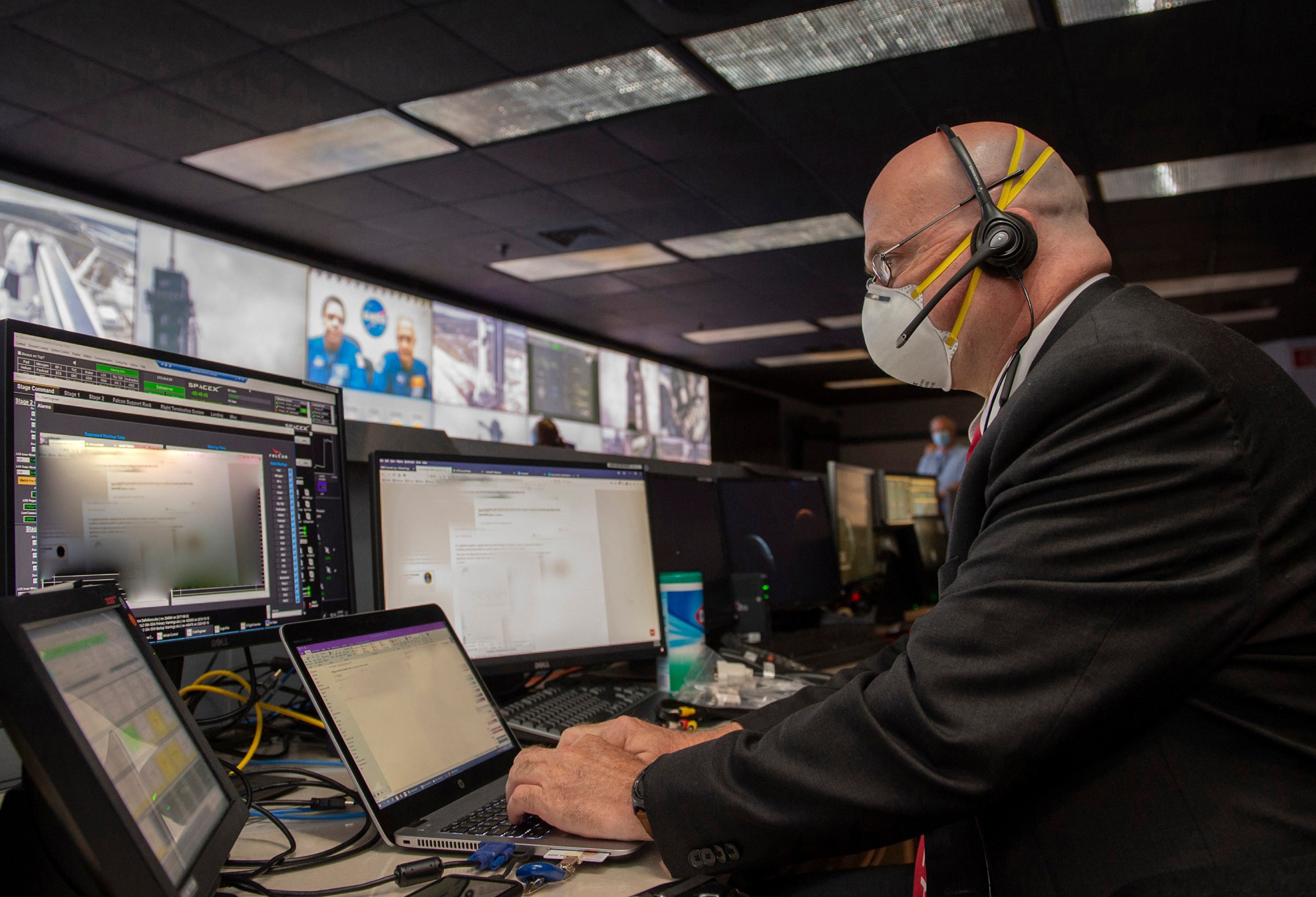
“Launches are incredibly exciting,” Crawford said. “They are stressful, obviously, but the sense of being a part of history and something bigger is an incredible feeling. As you get closer to T-minus 0, everyone gets calmed down, everything gets quiet. It’s a very unique experience and it is one that I don’t take lightly.”
The most rewarding part about Crawford’s involvement with the Commercial Crew Program is that he can make flights safer for the astronauts. Crawford has built relationships with many astronauts and he enjoys the opportunity to help make sure they are able to return to Earth safely.
While many people have influenced Crawford’s career aspirations, his father, Gordon Crawford, inspired him most, he said. The young Crawford aspired to work for NASA from a very early age and considered himself to be “a space cadet from early on.” His father worked at NASA’s Jet Propulsion Laboratory in the 1950s when Sputnik was launched. Throughout Crawford’s childhood, his father also worked with the Viking, Mariner, and Skylab programs. Crawford spent his early years in Southern California, but much of his childhood was spent in Salt Lake City, where he would attend the University of Utah, earning a bachelor’s degree in applied physics.
Paul Crawford joined NASA in 1990 as a co-op, a cooperative education student at Marshall.
“Even after working at NASA for more than 30 years,” Crawford said, “I’m still awestruck by the opportunity to work for my childhood dream organization and I still love going to work.“
Lambert, a NASA intern, is supporting Marshall’s Office of Strategic Analysis & Communications this fall.
Look After Yourselves and Others: A Message From Employee Assistance Program Coordinator Terry Sterry
Dear Marshall family,
Wow! It’s hard to believe that we’ve been dealing with the COVID-19 pandemic for almost eight months. Some days, it feels like it’s been going on forever, and other days, it still feels new and I’m still trying to figure out how to manage it all. These are certainly interesting and challenging times, and it isn’t just the pandemic that contributes to that – there’s also social injustice and civil unrest issues, politics, and the election season. Each of us also has our own specific life circumstances that may add to the stress and distress. I wanted to reach out and encourage you to keep taking good care of yourselves and each other.
When we’re facing challenges that seem to drag on and on, it can become all too easy to let our guard down and slowly stop doing the things we need to do to stay well. Other times, we become so focused in our determination to stay productive and effective at work, that the things we do to take care of ourselves simply fall off our plates, so to speak. The reality is that if we don’t take care of ourselves, we will eventually lose our ability to be effective at what we’ve set up as such a high priority.
So how do we juggle it all? Every situation is different, but some of the fundamentals are universally important for all of us. Make getting enough sleep and staying engaged with your loved ones, friends, and coworkers a high priority. Find ways to work some physical activity into each day. It doesn’t have to be anything strenuous; simply going for a walk can make a huge difference, both physically and emotionally. Maintain a reasonably healthy diet. Be mindful of and limit your alcohol consumption.
Set boundaries around your work and be deliberate in trying to stick to them. Take quick breaks several times throughout the day, to stand up and stretch, or walk around for a few minutes. Take real breaks. Step away from your computer and your phone and give yourself a few minutes to relax and clear your head. Take a real lunch break – away from your computer and phone. Take time to enjoy your hobbies, which allow us to lose ourselves in something that we enjoy, which in turn, gives our minds a rest and reduces our overall level of stress. Find someone that you trust to talk with about the things that are most troubling for you. This might be a friend, a loved one, or your pastor, or it might be the Employee Assistance Program or other counselor.
There may be times when we reach a point where we have to ask for help, or make a deliberate choice to let something slip. Making those choices can be hard and very stressful. If you’re in this situation, please reach out to your supervisor. The leaders of NASA and Marshall have empowered managers and supervisors to be more flexible than usual in order to help maintain the health and wellbeing of our workforce.
The holiday season is upon us, and this can be a very difficult time of year for some. Family get-togethers, or the inability to have such gatherings, can be very stressful, as can deciding on and buying gifts, traveling, and/or sadness brought on by losses or disappointments over the course of the year. Feelings of isolation and sadness due to the COVID-19 pandemic could potentially become more intense over the holidays, due to the traditional focus on family and togetherness. If you’re experiencing these types of distress, please keep reaching out to and talking with your trusted friends and loved ones. Allow them to help you through these difficult times. If you know someone who might be experiencing distress, please reach out to them, talk with them, and encourage them.
As we continue to face and deal with the challenges of 2020, I’m reminded of the fundamental tenets of the Incident- and Injury-Free initiative. Each one of us is the person most responsible for our own safety and wellbeing. Each one of us also has a responsibility to help protect the safety and wellbeing of those around us, when we can.
So, I close with a simple request and encouragement: Please keep taking good care of yourselves, please help others, and please allow others to help you.
The EAP is always here for you, to help in any way that we can. Contact me directly by email at terry.w.sterry@nasa.gov or by phone at 256-698-9589 if I can be of assistance.
Be safe and well,
Terry Sterry
Licensed psychologist and Marshall Employee Assistance Program coordinator
For more information on Marshall’s Employee Assistance Program, visit the Employee Assistance Program page on Inside Marshall. For more information on NASA’s coronavirus response and teleworking, visit NASAPeople.
Chandra Helps Researchers Assess Habitability of Planets Orbiting Elder Red Dwarf Stars
Planets orbiting close to the most abundant and longest-lasting stars in the Milky Way galaxy may be less hospitable to life than previously thought, per a new published study by researchers employing data from NASA’s Chandra X-ray Observatory and Hubble Space Telescope.
Scientists at the University of Colorado in Boulder and the University of Arizona in Tucson used Chandra and Hubble imagery to examine the red dwarf Barnard’s Star, which sits just 6 light-years away from Earth and is estimated to be about 10 billion years old, or more than twice the current age of the Sun.
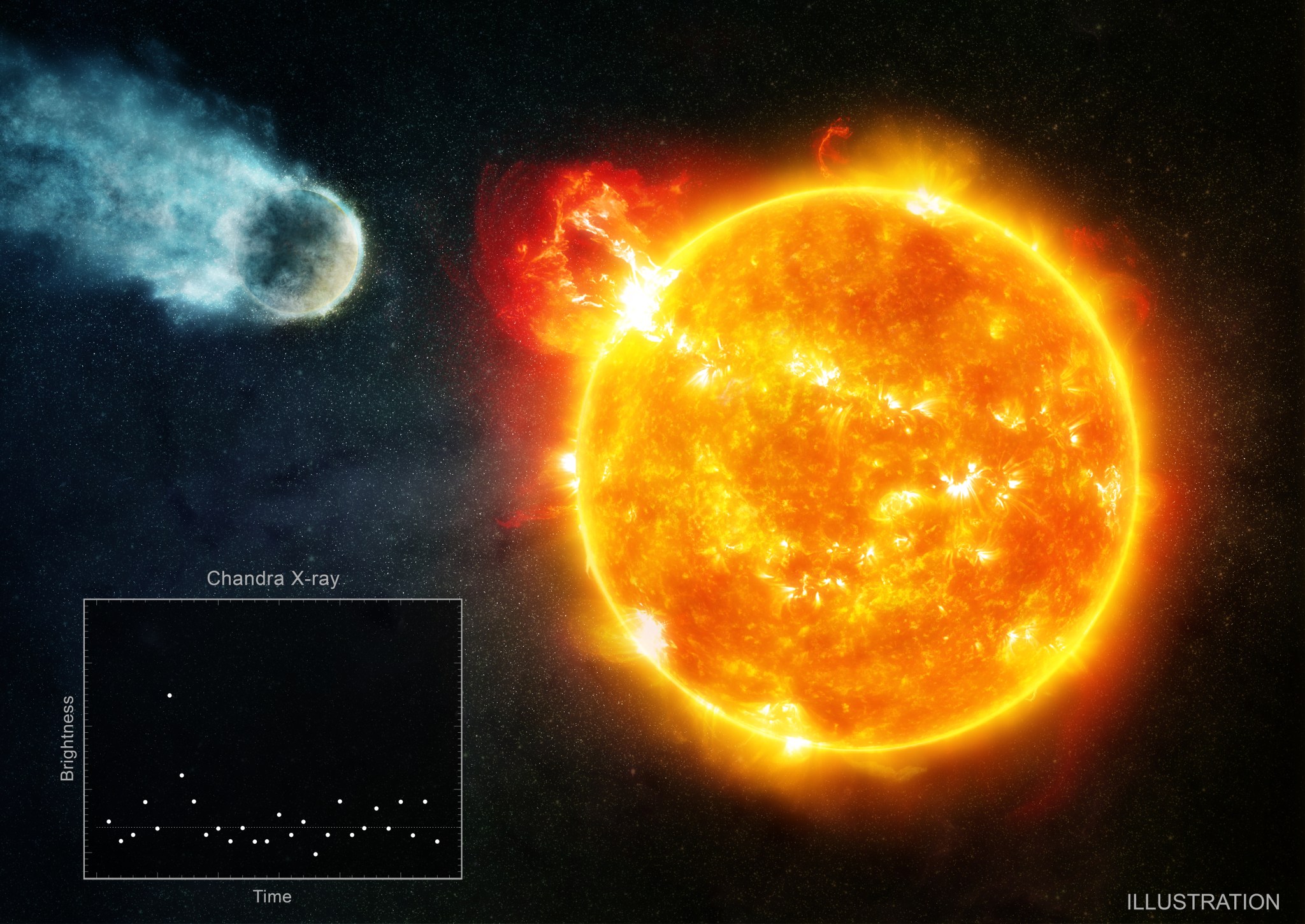
Red dwarfs are much cooler and less massive than the Sun, and because they burn through their fuel more slowly, they are expected to live much longer lives. Young red dwarfs, or those less than a few billion years old, are strong sources of high-energy radiation, including blasts of ultraviolet light and X-rays. Researchers know less, however, about how much damaging radiation red dwarfs give off later in their lifetimes.
The new observations concluded that about 25% of the time, Barnard’s Star unleashes scorching flares, which may damage the atmospheres of planets closely orbiting it. While its only known planet does not have habitable temperatures, this study adds to evidence that red dwarfs may present serious challenges for life on their planets.
“Red dwarfs are the most numerous types of stars, and their small sizes make them favorable for studying orbiting planets. Astronomers are interested in understanding what the prospects are for habitable planets around red dwarfs,” said study lead Kevin France of the University of Colorado.
The study, published in the Oct. 30 edition of The Astronomical Journal, incorporates Hubble observations of Barnard’s Star taken in March 2019 and Chandra imagery obtained in June 2019. The observations, which revealed high-energy ultraviolet and X-ray flares, respectively, were about seven hours in duration.
“If these snapshots are representative of how active Barnard’s Star is, then it is pumping out a lot of harmful radiation,” said study co-author Girish Duvvuri, also of the University of Colorado. “This amount of activity is surprising for an old red dwarf.”
The team assessed what the results mean for rocky planets orbiting in the habitable zone – the area where liquid water could exist on a planet’s surface – of a red dwarf like Barnard’s Star. Past studies suggest that any atmosphere formed early in the history of a habitable-zone planet was likely eroded away by high-energy radiation from the star during its volatile youth. Later, however, planetary atmospheres might regenerate as the star became less active with age. This regeneration process may stem from gases released by volcanic processes or by the impacts of solid material on the surface.
But the onslaught of powerful flares like those reported in the new study, repeatedly occurring over hundreds of millions of years, could reverse that regenerative process, eroding any newly reconstituted atmosphere and once again reducing the likelihood of these worlds supporting life.
The surprising findings led the team to consider other possibilities for life on planets orbiting old red dwarfs like Barnard’s Star. Although planets in the traditional habitable zone may have their atmospheres bled away by such flares, astronomers suggest extending the search for habitable planets farther out from host stars, where high-energy radiation doses would be smaller.
Currently, the team is studying additional red dwarfs to determine whether Barnard’s Star is typical. “It may turn out that most red dwarfs are hostile to life,” said co-author Tommi Koskinen of the University of Arizona. “In that case, the conclusion might be that planets around more massive stars, like our own Sun, might be the optimal location to search for inhabited worlds with the next generation of telescopes.”
To date, more than 4,000 exoplanets – or worlds beyond the orbit of the Sun – have been confirmed. Many of them orbit red dwarfs. Understanding what makes planets habitable is of interest to astrobiologists, who study how life originated on Earth and where it might exist in the solar system and beyond.
NASA’s Marshall Space Flight Center manages the Chandra program for the agency. The Smithsonian Astrophysical Observatory’s Chandra X-ray Center controls science and flight operations from facilities in Cambridge and Burlington, Massachusetts.
NASA’s Lucy Spacecraft Receives First Instrument, Highlighted on ‘This Week @NASA’
NASA’s Lucy mission is featured in “This Week @NASA,” a weekly video program broadcast on NASA-TV and posted online.
The mission, which will be the first to visit the Trojan asteroids near Jupiter, was recently outfitted with its first scientific instrument. The Lucy LOng Range Reconnaissance Imager will provide highly detailed views of the surfaces of these never-before-seen bodies that scientists believe once were situated in the outer solar system. Lucy is targeted for launch in October 2021.
The Trojans are time capsules from the birth of the solar system more than 4 billion years ago. The swarms of Trojan asteroids associated with Jupiter are thought to be remnants of the primordial material that formed the outer planets. These primitive bodies hold vital clues to deciphering the history of the solar system and, perhaps, even the origins of organic material on Earth.
The mission takes its name from the fossilized human ancestor – called “Lucy” by her discoverers – whose skeleton provided unique insight into humanity’s evolution.
Lucy is a project of the Science Mission Directorate’s Discovery Program, managed by NASA’s Marshall Space Flight Center.
View this and previous episodes at “This Week @NASA” on NASA’s YouTube page.
This Week in NASA History: HEAO-2 Launches – Nov. 13, 1978
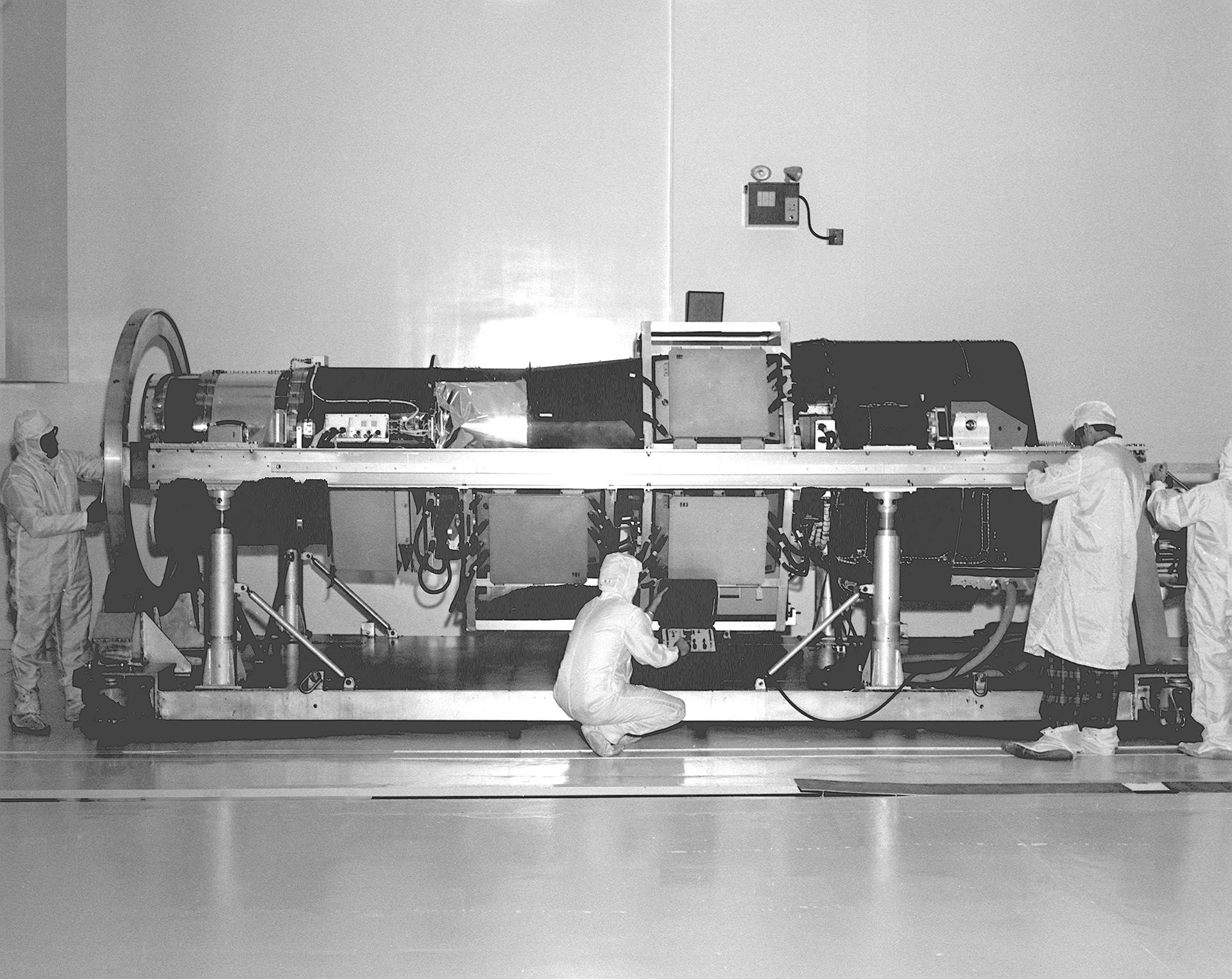
This week in 1978, the High Energy Astronomy Observatory 2 was launched from NASA’s Kennedy Space Center aboard an Atlas-Centaur rocket. HEAO-2, the second of three HEAO satellites, was renamed Einstein after launch and was the first fully imaging X-ray telescope put into space. It was also the first NASA mission to have a guest observer program. Here, the HEAO-2 telescope is checked by engineers in NASA Marshall Space Flight Center’s X-ray Calibration Facility. Today, NASA’s satellite X-ray telescope, the Chandra X-ray Observatory, is managed by the Marshall Center. The NASA History Program is responsible for generating, disseminating, and preserving NASA’s remarkable history and providing a comprehensive understanding of the institutional, cultural, social, political, economic, technological, and scientific aspects of NASA’s activities in aeronautics and space. For more pictures like this one and to connect to NASA’s history, visit the Marshall History Program’s webpage. (NASA)
























